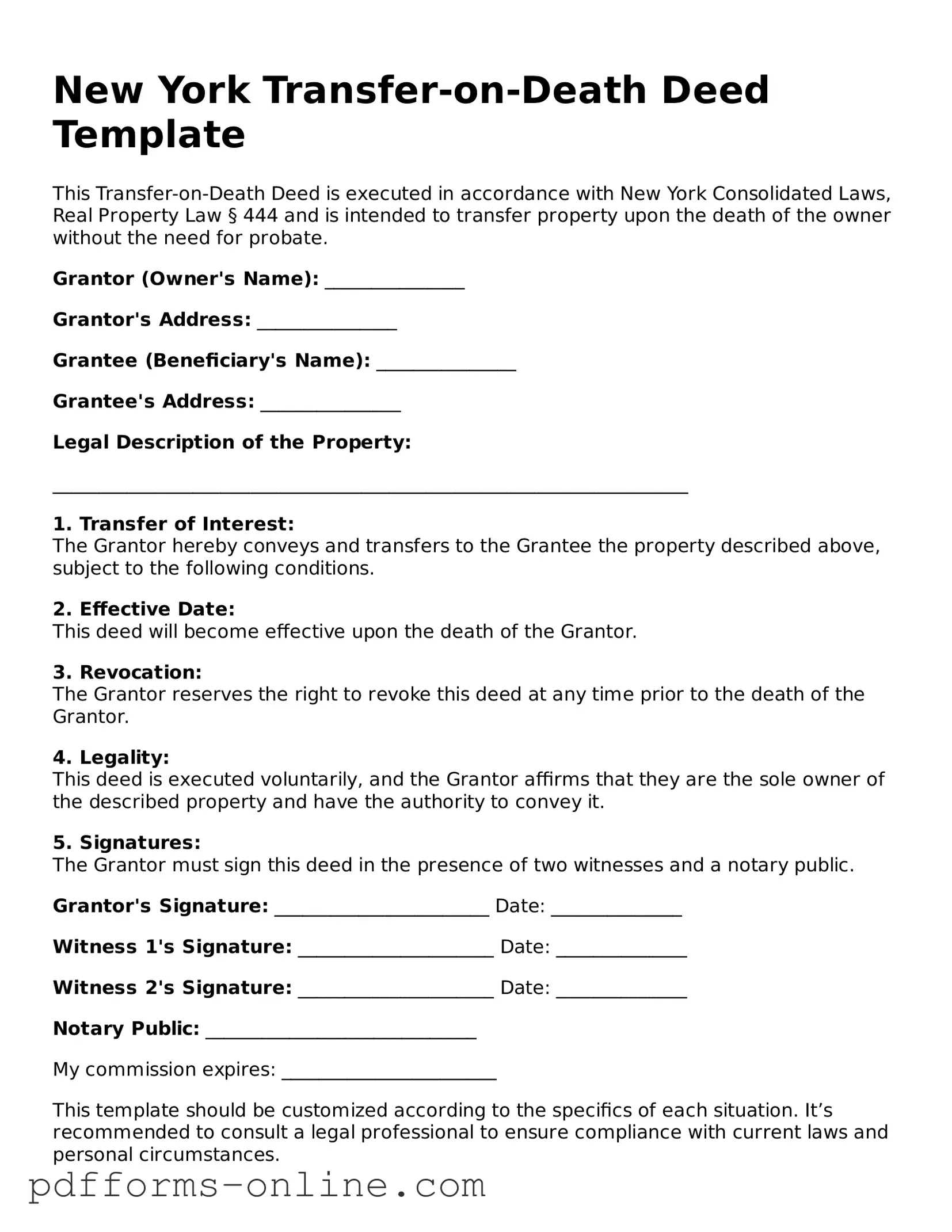New York Transfer-on-Death Deed Template
This Transfer-on-Death Deed is executed in accordance with New York Consolidated Laws, Real Property Law § 444 and is intended to transfer property upon the death of the owner without the need for probate.
Grantor (Owner's Name): _______________
Grantor's Address: _______________
Grantee (Beneficiary's Name): _______________
Grantee's Address: _______________
Legal Description of the Property:
____________________________________________________________________
1. Transfer of Interest:
The Grantor hereby conveys and transfers to the Grantee the property described above, subject to the following conditions.
2. Effective Date:
This deed will become effective upon the death of the Grantor.
3. Revocation:
The Grantor reserves the right to revoke this deed at any time prior to the death of the Grantor.
4. Legality:
This deed is executed voluntarily, and the Grantor affirms that they are the sole owner of the described property and have the authority to convey it.
5. Signatures:
The Grantor must sign this deed in the presence of two witnesses and a notary public.
Grantor's Signature: _______________________ Date: ______________
Witness 1's Signature: _____________________ Date: ______________
Witness 2's Signature: _____________________ Date: ______________
Notary Public: _____________________________
My commission expires: _______________________
This template should be customized according to the specifics of each situation. It’s recommended to consult a legal professional to ensure compliance with current laws and personal circumstances.
